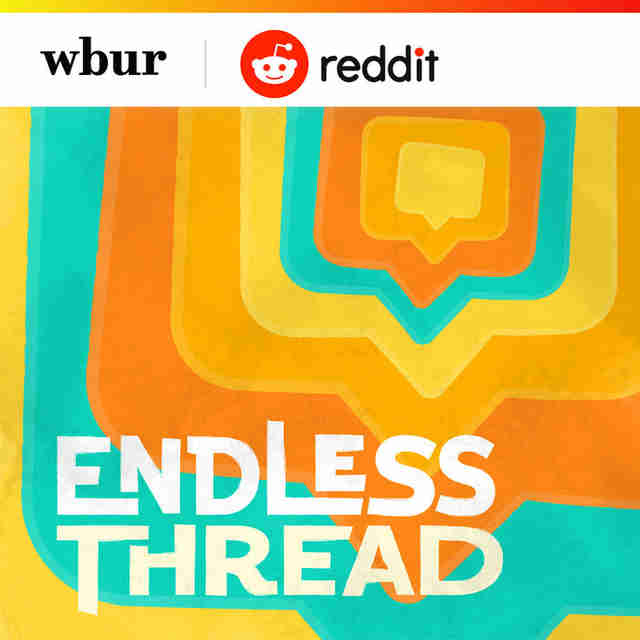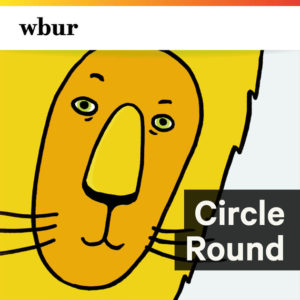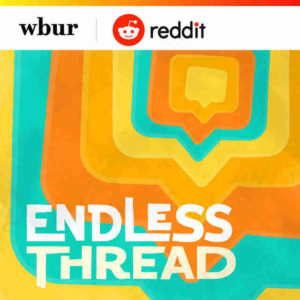Background
WBUR’s iLab produces a variety of critically-acclaimed podcasts, but we’ve never asked our podcast listeners for donations. Our traditional on-air pledge drives have been limited to the region covered by our radio towers. In contrast, our podcasts are downloaded by listeners from around in the world; asking these listeners for donations could provide a new revenue stream from an untapped, global audience.
We identified three challenges for this experiment, primarily stemming from the inherent difference in mediums between broadcast radio and podcast downloads.
- Podcasts are on-demand, so we won’t have the traditional advantage of a captive radio audience. While a commuter may remain tuned in for the length of a radio donation ask, a podcast listener can advance the audio using the built-in ‘advance 15/30 seconds’ buttons available in podcast apps.
- We’ve never asked for donations through a podcast before, meaning we’ll need to experiment to determine what messaging, donation amount, and premium offer are most effective at activating the audience and persuading them to follow through with their donation.
- Podcasts are primarily a mobile experience, and our standard donation form is not what mobile users have come to expect from payment processors. It asks potential donors to fill in far too many fields on their cell phone keyboard, and a lot of those fields are not necessary to process a donation or identify the donor. To make it as easy as possible for mobile donors to give, we need to make this a more seamless experience by taking advantage of mobile payment processing technologies.
First Experiment: Circle Round – Coloring Book
Planning
Circle Round is a storytelling podcast aimed at young children and families. For our first experiment, we offered a pledge gift of a Circle Round coloring book in return for a donation of $5 per month or $60 for a year. The coloring book tied into episodes so children could color along while listening. However, this value was not effectively demonstrated by our donation page – there was no way to view the coloring book at this point in the process.
In this experiment, we placed the call-to-action in the podcast’s midroll. Listen to an example of our Circle Round coloring book mid-roll:
Metrics
- Activation Rate (downloads to attempted gifts): 0.17% (452 users activated out of 262,260 downloads)
- Conversion Rate (attempted to successful gifts): 11.5% (52 users donated out of 452 users activated)
- Effective Conversion Rate (downloads to successful gifts): 0.02% (52 users donated out of 262,260 downloads)
Second Experiment: Endless Thread – Six-Second Song
Planning
Endless Thread explores stories found in Reddit threads and interviews the people involved, as well as experts on the subject. We offered a customized 6-second song written and recorded by the hosts in return for a $10 donation. We went this low in our ask amount in an attempt to make this an ‘impulse purchase’ and get a larger portion of the audience interested. Instead of relying only on a web donation form, we used a text-to-donate platform, with a web form as a fallback. Successful donors were routed to a form that collected their information and preferences for their custom song. As we approached the end of the campaign, we updated the pre-roll to enhance the urgency of the request, and to provide examples of the six-second songs.
We placed the call-to-action in the preroll and varied it week-by-week. Listen to an example of an Endless Thread pre-roll, including a six-second song:
Metrics
- Activation Rate (downloads to attempted gifts): 0.11% (471 users activated out of 433,447 downloads)
- Conversion Rate (attempted to successful gifts): 49.47% (233 users donated out of 471 users activated)
- Effective Conversion Rate (downloads to successful gifts): 0.05% (233 users donated out of 433,447 downloads)
Third Experiment: Circle Round – Summer Camp Sweepstakes
Planning
The text-to-donate tool used in the second experiment showed a high failure rate, so we wanted to try an alternative mobile payment system called Give Lively. This tool allows non-profits to quickly create mobile-friendly fundraising pages. Critically, it also functions with Apple Pay or Google Pay, largely eliminating the cumbersome process of filling out those fields with a mobile device’s keyboard. Give Lively doesn’t use the donor’s cell phone bill to process the payments, a significant advantage because it eliminates issues around cell phone providers declining donation attempts.
We conducted a third experiment, again using the Circle Round podcast audience. This time, we offered entrance to a summer camp sweepstakes in return for a $25 donation made using our Give Lively-powered donation page.
Initially, we did not feature the voice of the host in the pre or mid-roll noting the sweepstakes, and very few users were activated to visit the page, let alone donate. Activation and conversion rates improved when we added a host message as a mid-roll. Another factor is that the sweepstakes offer had numerous eligibility restrictions, including the requirement that a winning camper be between the ages of 8 and 11.
Listen to an example of a Circle Round sweepstakes creative mid-roll, before we added audio in the host’s voice:
…and after we added a message from the host; this addition improved our activation and conversion rates for the campaign:
Metrics
- Activation Rate (downloads to attempted gifts): 0.07% (375 users activated out of 504,460 downloads)
- Conversion Rate (attempted to successful gifts): 8.00% (30 users donated out of 375 users activated)
- Effective Conversion Rate (downloads to successful gifts): 0.01% (30 users donated out of 504,460 downloads)
Conclusions
Payment Methods
-
Our conversion rate suffered when we relied on the traditional donation form in the first experiment. Compare its 11.5% conversion-rate to the 49.47% we achieved in the second experiment by adding text-to-donate.
- This likely a result of a) the cumbersome mobile experience offered by our traditional donation form and b) the absence of a coloring book image on the donation form.
- Text-to-donate platforms that charge to donor’s cell phone bills is not an ideal solution; 55% of attempts failed. 13% was due to technical failure (the donor’s cell phone bill would not accept the charge) and the remaining 42% did not send a second text to confirm their donation. Additionally, with these platforms we are not permitted to re-market to contacts acquired through text-to-donate, and recurring donations are not an option.
- Give Lively did not offer the marked improvement in the conversion rate that we’d been hoping for. However, we attribute that to the low level of interest in the sweepstakes offer. We plan to try this tool again with a more broadly appealing offer.
Donation Amounts
-
We recommend asking for at least $20 for a one-time donation or at least $5 for a per-month donation. Lowering our ask for Endless Thread to $10 for the six-second song did give us the impulse purchase volume we’d expected, but our avid listeners voluntarily donated more, averaging $20.
- The Endless Thread donors who used the web form could choose their donation amounts. When users made their donation via the web form, 25% chose to donate more than the suggested $10; one even donated $100. This suggests we could have easily doubled the Endless Thread ask to $20 without losing many donors.
Donation Messaging
- The audio clips where we made our asks were quite short, and we’ve begun to hear success stories indicating that a longer ask is more effective at activating the listeners.
- To effectively activate the audience, the ask must come from the host, it must convey a sense of urgency, and it should be placed in the pre-roll.
If you’re interested in learning more about these experiments, as well as others from NHPR and WNYC, please register for our upcoming Greater Public Webinar, Podcasting Donation Experiments With NHPR, WBUR and WNYC by Greater Public (must be part of a Greater Public member station to register) or view our free Bizlab webinar on this subject, Podcast Donation Experiments with NHPR & WBUR.


